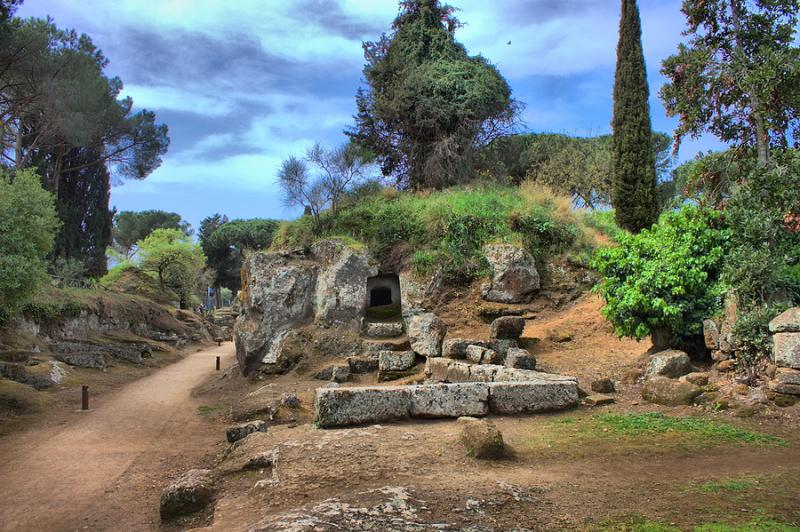Unesco Sites of Italy: Etruscan Necropolises of Cerveteri and Tarquinia
ITA:

The Etruscan cemeteries of Cerveteri and Tarquinia are rare and precious testimonies to the ancient Etruscans, who were the first people to establish an urban type of civilization in the western Mediterranean, a civilization that survived for about 700 years from the eighth to the first century BC, in the territories of central Italy, from Lazio to Tuscany.
This Unesco site, inscribed into the World Heritage list in 2004, includes the two necropolises of Banditaccia and Monterozzi, the main cemeteries of the ancient Etruscan city-states of Cerveteri and Tarquinia. Together, they provide most of the archaeological discoveries related to the Etruscan civilization over the course of nine centuries.
The necropolis near Cerveteri, known as Banditaccia, contains thousands of tombs organized in a city-like plan, with streets, small squares and neighborhoods. The 20-hectare site dates back to the 9th century BC and contains different types of tombs: trenches carved out of the rock, mounds, often containing more than one grave, and others, always carved into the rock, in the shape of huts or small houses, with richly detailed structures. Since there are only very few written testimonies of the Etruscans, this site represents an exceptional example of Etruscan domestic architecture from its origins to the Hellenic period.
The necropolis of Tarquinia, also known as Monterozzi, contains 6000 sepulchers carved out of the rock. With its 130 hectares, it is the largest such complex. Tarquinia is famous for its 200 painted tombs, the oldest of which dates back to the seventh century BC. These paintings are the only evidence of classical art from the pre-Roman period existing in the Mediterranean basin.
I cimiteri etruschi di Cerveteri e Tarquinia rappresentano rare e preziose testimonianze degli antichi Etruschi, che furono il primo popolo a stabilire una civiltà di tipo urbano nel Mediterraneo occidentale, civiltà che sopravvisse per circa 700 anni, dall'ottavo al primo secolo a.C., nei territori dell'Italia centrale, dal Lazio alla Toscana.
Questo sito Unesco, inserito nella lista del Patrimonio Mondiale nel 2004, comprende le due necropoli di Banditaccia e Monterozzi, i principali cimiteri delle antiche città-stato etrusche di Cerveteri e Tarquinia. Insieme, questi luoghi forniscono la maggior parte delle scoperte archeologiche relative alla civiltà etrusca nel corso di nove secoli.
La necropoli vicino a Cerveteri, conosciuta come Banditaccia, contiene migliaia di tombe organizzate in una struttura simile ad una città, con strade, piazzette e quartieri. Il sito di 20 ettari risale al IX secolo a.C. e contiene diversi tipi di tombe: trincee scavate nella roccia, tumuli, spesso contenenti più di una tomba, e altre, sempre scavate nella roccia, a forma di capanne o piccole case, con strutture riccamente dettagliate. Dal momento che ci sono solo pochissime testimonianze scritte degli Etruschi, questo sito rappresenta un eccezionale esempio di architettura domestica etrusca dalle origini al periodo ellenico.
La necropoli di Tarquinia, conosciuta anche come Monterozzi, contiene 6000 sepolcri scavati nella roccia. Con i suoi 130 ettari, è il più grande di tali complessi. Tarquinia è famosa per le sue 200 tombe dipinte, la più antica delle quali risale al VII° secolo a.C. Questi dipinti sono l'unica testimonianza di arte classica del periodo pre-romano esistente nel bacino del Mediterraneo.











